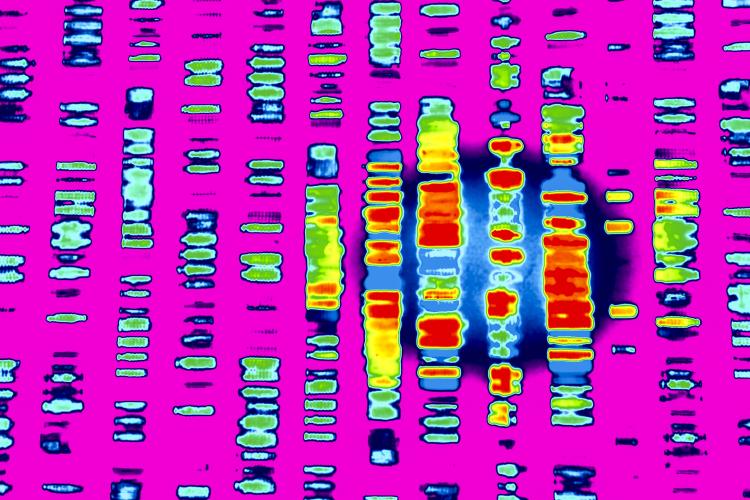ARDAT want to know more about the behaviour of gene and cell therapy treatments, delivered by viral vectors, once they’re inside the body

Advanced therapy medicinal products (ATMPs) such as cell and gene therapies could overhaul the way we treat genetic diseases, but it’s still extremely difficult to predict who will respond well to treatment and who will suffer serious side effects. One major obstacle involves finding the best way to deliver therapeutic genes into the target cells in the body. The most common method employs something that is well-versed in getting inside human cells: viruses.
The team behind the ARDAT project is trying to answer some of the most perplexing questions surrounding viral gene and cell therapy, in the hope of getting us closer to new treatments for rare diseases. They’re examining how these treatments are broken down inside the body in an effort to make better predictions about when it works and why. The project is focussing on rare diseases caused by a single gene mutation, though many of their findings will be applicable to other diseases.
We spoke to Dr Gregory LaRosa VP, Head of Scientific Research, Rare Disease Research Unit at Pfizer and Professor Mimoun Azzouz, Chair of Translational Neuroscience at University of Sheffield and ARDAT Coordinator.
What’s the problem ARDAT has set out to fix?
One of the most promising carriers for gene therapy is adeno-associated virus (AAV) and although data is still emerging and new trials just beginning, for haemophilia A and B the data has been excellent. It has been shown that a single dose nearly eliminates the need for infusions and nearly eliminates the occurrence of spontaneous bleeds for several years.
One of the main issues is that the immune response of patients to a large dose of AAV viral capsid protein (the carrier used to deliver the gene therapy) can result in loss of expression of the therapeutic gene, or can generate a severe response. The response can be managed with certain treatments, but it’s not an ideal situation, and the possible loss of the therapeutic gene expression can lead to an ineffective treatment.
Another key issue is that 50-70% of people have been naturally exposed to AAV at some point in their lifetime, and so have pre-existing antibodies to AAV. This can prevent the therapeutic viral carrier from reaching the target tissue. That makes these people ineligible for treatment. Additionally, after treatment, patients are excluded from redosing, due to the level of neutralising antibodies generated by the response to the dose of the vector.
How does ARDAT aim to fix this problem?
We want to better elucidate and understand the immunological and non-immunological factors that can impact the persistence of the therapeutic gene expression and eligibility for treatment. Molecular features may influence persistence, which in turn may be impacted by age and tissue target. The potential loss of expression due to tissue growth and cell division requires deeper molecular understanding.
If your efforts are successful, how will life change for people with rare genetic diseases?
The goal of gene and cell therapy is to provide, with a single treatment, sustained levels of therapeutic gene expression or cell activity, with potentially lifelong duration. For rare genetic diseases, this can provide a chance for patients to have a cure for their severe, debilitating disease state. It could free them from weekly intravenous infusions of clotting factor, free them from being confined to a wheelchair, or it could allow others to live who would otherwise succumb to their disease.
This is new regulatory terrain. What kind of interaction do you expect with the regulating authorities?
We’re working with regulators to streamline regulatory requirements. We want to build a greater understanding and evidence base of the essential performance parameters. These parameters include the persistence of the efficacy of gene and cell therapy and the potential for re-treatment, and the impact of host immunology on patient inclusion and product efficacy.
We also want to gather data on the molecular characterisation of common features of each delivery modality and the possibility of creating a ‘plug-and-play’ type of platform. We are examining the right balance between the standards for product characterisation, safety, and the value of the medicine.
Members of the European Medicines Agency (EMA) and the Food and Drug Administration (FDA) reviewed the ARDAT proposal and gave it strong support, and two regulators from the both bodies are on the project’s Scientific Advisory Board. Close regulatory engagement offered by ARDAT will facilitate fast progression of these therapies through the translational pathway to benefit patients.
What will be the biggest hurdle in the work of the project, and how do you plan to overcome it?
One challenge will be the development of a gene and cell therapy biobank. Samples for patients dosed with ATMPs will be very helpful for understanding the detailed molecular and cellular characteristics of the nature of the responses. The cooperation of both academic and corporate sponsors of clinical trials will be needed. ARDAT will also be building novel in vitro cell assays to help address these issues.
Read more
Treating rare diseases: can new business models solve equity of access issues?
Hope that a cancer drug can stop FOP, one of the rarest diseases in the world
